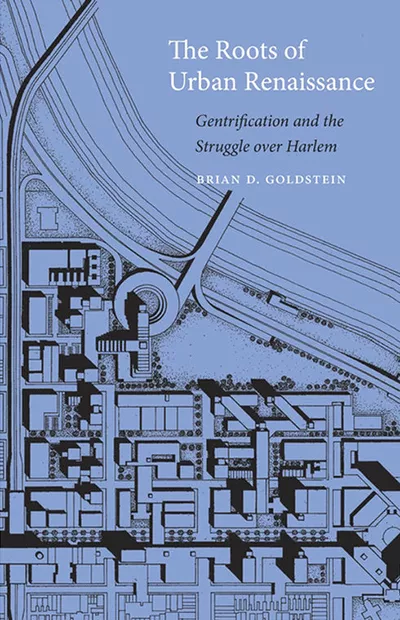Art Historian Brian Goldstein Honored for Book on Harlem Redevelopment

In The Roots of Urban Renaissance, Goldstein details a period when the control of city transformation shifted from the government to grassroots, community-based groups in Harlem.
“Sustainability” may not immediately call to mind issues of redevelopment and gentrification. Yet a recent book about urban renewal by Assistant Professor of Art History Brian Goldstein has received national recognition for exemplifying scholarship in planning for sustainable development.
Goldstein’s The Roots of Urban Renaissance: Gentrification and the Struggle Over Harlem, which chronicles the history of the neighborhood’s redevelopment from the early 1960s to the early 2000s, received the 2020 John Friedmann Book Award from the Association of Collegiate Schools of Planning. Presented every other year, the prize is named for a distinguished scholar known in the field as the “Father of Urban Planning.”
“Friedmann was influential in thinking about questions of sustainability in a very broad way,” says Goldstein, who is also Swarthmore’s art history coordinator. “Sustainability is about much more than environmental resources or fuel. It’s also about building communities that can be inclusive and equitable, and acknowledging that different people see those goals differently. Those are all things a planner should consider.”
An urban and architectural historian, Goldstein studies the ways that individuals, especially people of color, have used architecture and planning to envision the future of their homes and communities. In The Roots of Urban Renaissance, he details a period when the control of city transformation shifted from the government to grassroots, community-based groups. Goldstein found that many of Harlem’s markers of gentrification, such as its mixed-income housing and small shopping malls, were not imposed on the neighborhood by outside developers, but rather arose from the politics of racial self-determination.
At its core, The Roots of Urban Renaissance is “ultimately a story of how to make a more sustainable community,” Goldstein says, “understanding how things like community development have to be approached with nuance and care.” The 2017 book, which grew out of Goldstein’s doctoral dissertation, also received the 2019 Lewis Mumford Prize from the Society for American City and Regional Planning History.
The more recent John Friedmann Book Award came as a pleasant surprise to Goldstein, especially since he didn’t realize he was being considered for the honor.
“It was fun for me to be recognized by an organization that represents professional planners,” he says. “As historians, we want our work to be understood as not just trivia, but also as insights that can inform applied work.”
Goldstein is interested in how buildings look stylistically, “but also in understanding them as evidence of political and social decisions, of social movements and political activism,” he says. “That’s the way I teach my courses at Swarthmore: emphasizing the social, political, or cultural history of built artifacts as much as interpreting them as formed works in general.
“It’s not just the way a building looks,” he adds. “It’s who lives in it, how they live in it, how they shape it, who builds it, who hires the person who designs it, who designs it — all of those factors that social historians do really well and architectural historians have started to make room for.”



